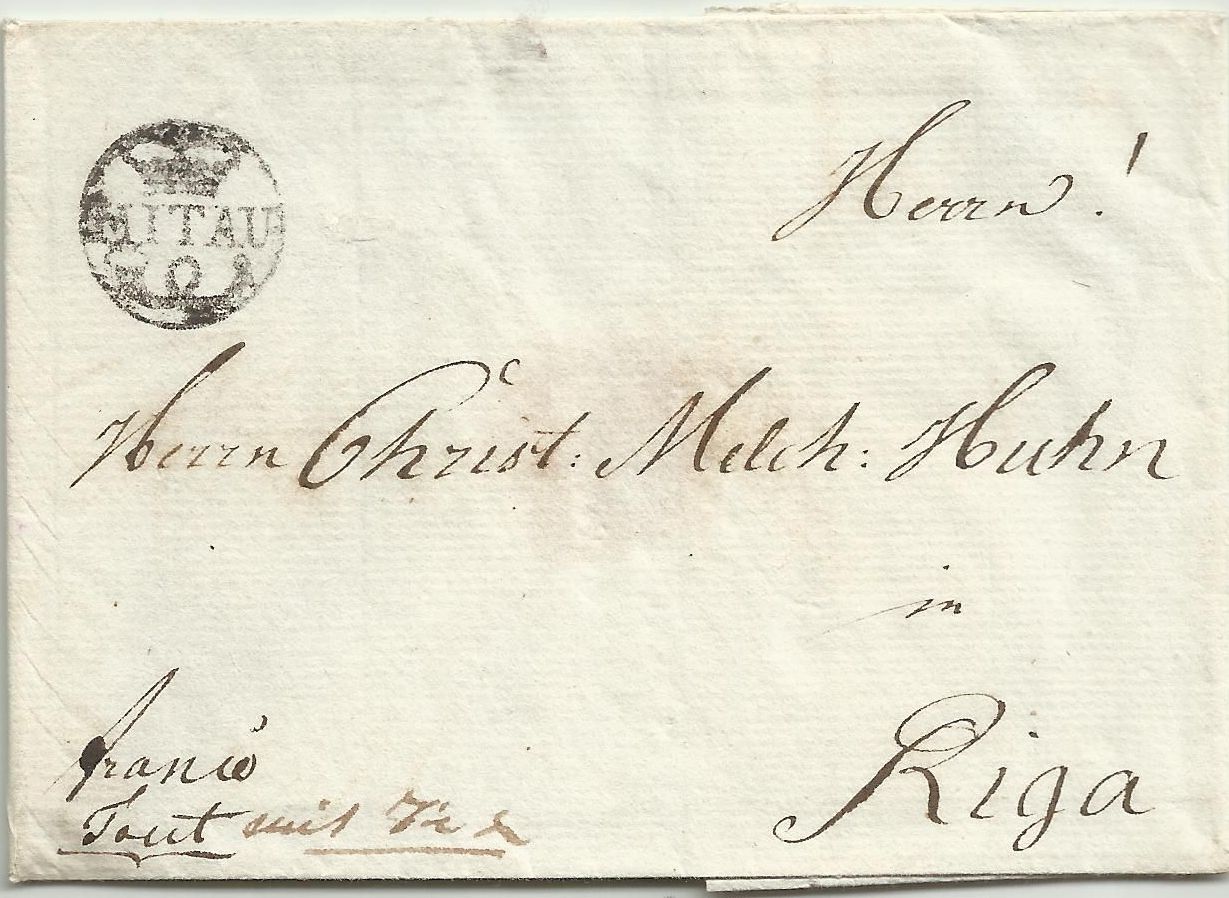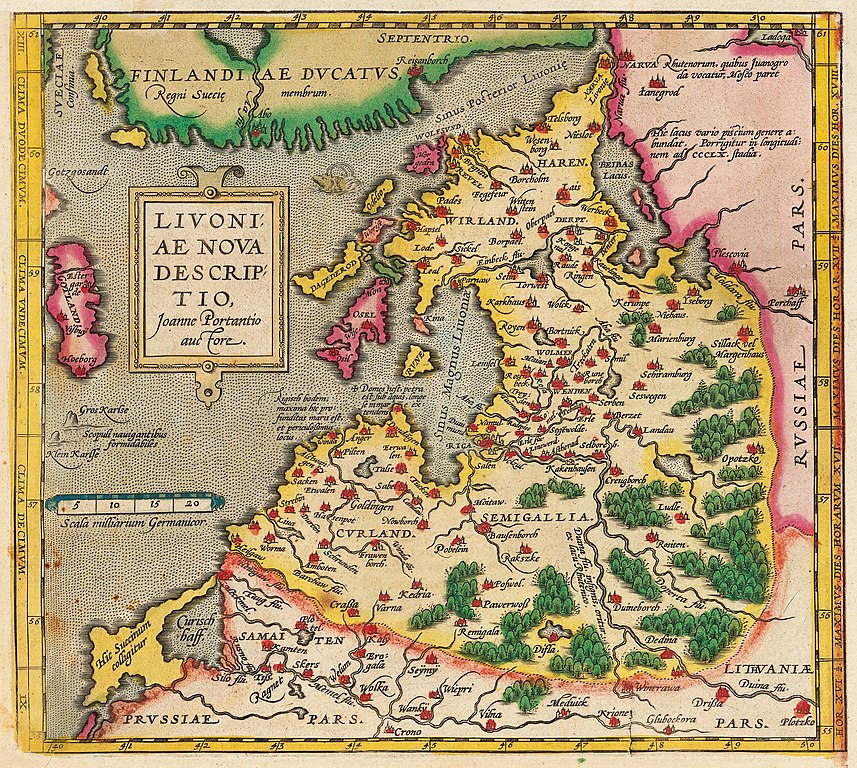Latvia
-
Courland, Semigallia, Latgale
Prehistory: the Livonian Confederation
The Livonian Confederation (also Latin Terra Mariana, Mary's Land) was a loosely organised confederation of states that existed from 1228 until the 1560s in what is now Estonia and Latvia. It consisted of five smaller territories that were subordinate to the Order of the Brothers of the Sword (and from 1237 to the Teutonic Order), the Archbishop of Riga and the Bishops of Dorpat, Ösel and Kurland.
The Livonian War (1558-1583) brought an end to all the territories of the Livonian Confederation.
1561–1795 Duchy of Courland and Semigallia
In 1561, the Parliament of Courland decided to place itself under the protection of Sigismund II August, King of Poland and Grand Duke of Lithuania. The last Landmeister of the Teutonic Order in Livonia, Gotthard Kettler, had himself enfeoffed by Poland-Lithuania with Courland, which had been raised to the status of a duchy and to which Semigallia also belonged. The capital was Mitau. Until the disappearance of the duchy in 1795, Courland was under the feudal rule of Poland-Lithuania.
Under Duke Jakob Kettler (1642-1682), Courland reached its highest economic flowering: trade relations were sought, shipbuilding and metalworking were promoted. The port cities of Windau and Libau became home ports for one of the largest European merchant fleets. Attempts were also made to establish colonies in Tobago and on the Gambia River.
At the third partition of Poland in 1795, Courland became part of Russia and formed one of the three Baltic provinces, along with the then governorates of Estonia and Livonia.
Postal system
In postal terms, too, Courland was under the crown of Poland. However, Courland did not initially have its own post office. Duke Jacob of Courland came to an agreement with the Swedish postmaster Jacob Becker in Riga that this postman would also carry the Courland mail on the route from Riga to Memel via Courland territory. In 1632, a Royal Swedish post office was mentioned in Mitau for the first time. In 1668, Duke Jacob confirmed the rights of the Swedish postal service in Courland and provided it with land for horse changing stations for a small rent; in return, the Swedish postal service took care of the Courland letters and parcels. The postal route led from Riga via Mitau, Libau and Polangen to Memel. When a separate postal service through Courland was organised under Duke Frederick Casimir in 1685, constant and fierce competition arose.
The first postmark (in German) was used in Mitau in 1770. The round postmark with ducal crown and post horn used in 1776–1792 looks very striking:

Letter from Mitau to Riga, "franco Tout" (= completely free, i.e. franked for the whole distance). Polish round cancel with ducal crown and post horn, 1776
1561–1772 Latgale (Polish Livonia)
At the end of the Livonian War, Sweden had conquered Estonia, and Poland-Lithuania received not only the Duchy of Courland-Semgallia but also the Duchy of Livonia with Riga.
In 1621 Gustav II Adolf conquered Riga, and with it most of Livonia became part of Sweden. Only the area around Dünaburg and Rositten, like Courland, remained Polish and was called "Polish Livonia" or also " Latgalia/Latgale".
There are practically no postal records from this time, because a state post service did not exist by then.
Polish Livonia came to Russia in 1772 with the 1st Polish partition and became part of the Russian governorate of Vitebsk.
-
Royal Swedish Post
-
Imperial Russian Post
-
German Occupation / Ob. Ost
-
Independent Republic of Latvia
-
Soviet Occupation
-
German Occupation / Ostland / Courland
-
Camp Mail / Latvians in Exile
-
Independent Republic of Latvia (restored)
-
Private Mail in Latvia



